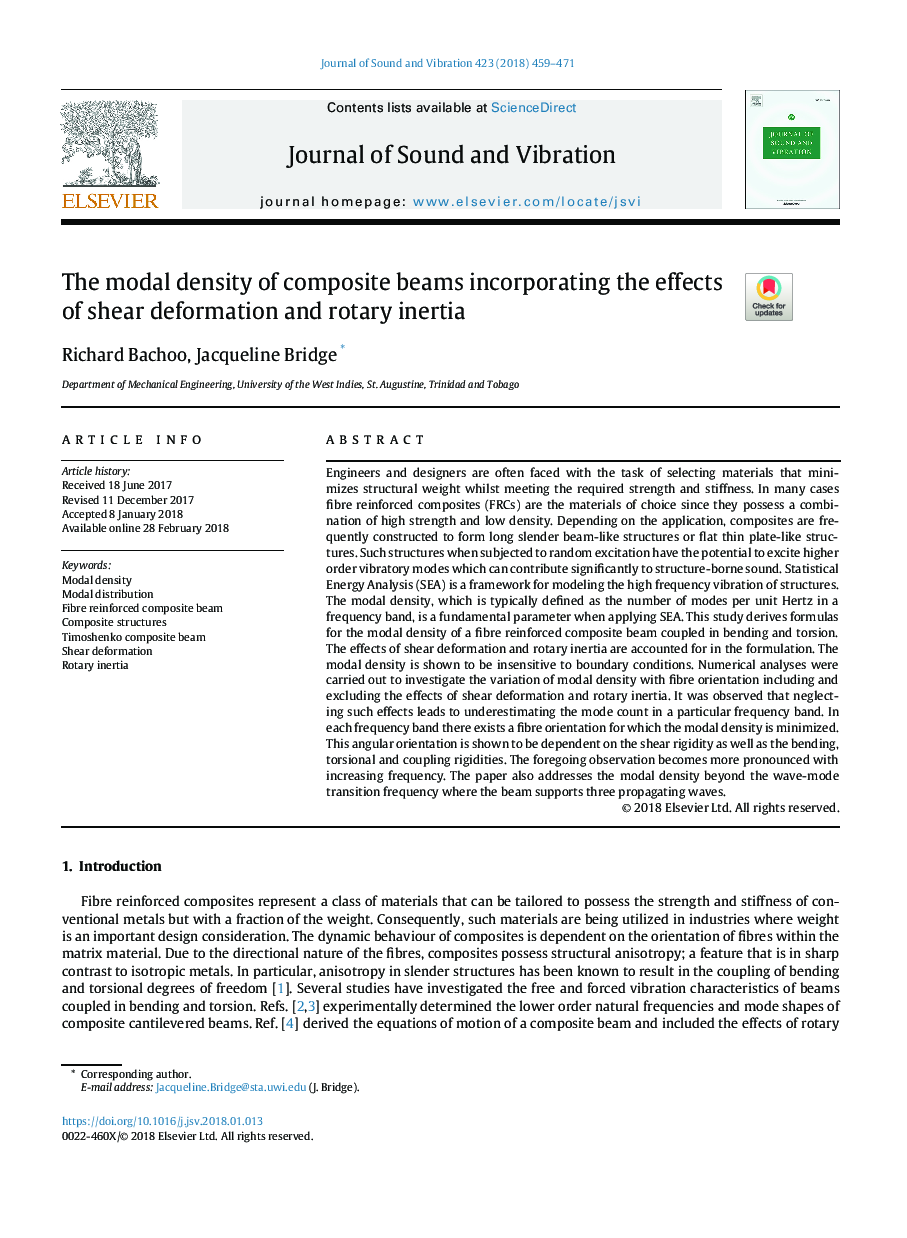| Article ID | Journal | Published Year | Pages | File Type |
|---|---|---|---|---|
| 6753334 | Journal of Sound and Vibration | 2018 | 13 Pages |
Abstract
Engineers and designers are often faced with the task of selecting materials that minimizes structural weight whilst meeting the required strength and stiffness. In many cases fibre reinforced composites (FRCs) are the materials of choice since they possess a combination of high strength and low density. Depending on the application, composites are frequently constructed to form long slender beam-like structures or flat thin plate-like structures. Such structures when subjected to random excitation have the potential to excite higher order vibratory modes which can contribute significantly to structure-borne sound. Statistical Energy Analysis (SEA) is a framework for modeling the high frequency vibration of structures. The modal density, which is typically defined as the number of modes per unit Hertz in a frequency band, is a fundamental parameter when applying SEA. This study derives formulas for the modal density of a fibre reinforced composite beam coupled in bending and torsion. The effects of shear deformation and rotary inertia are accounted for in the formulation. The modal density is shown to be insensitive to boundary conditions. Numerical analyses were carried out to investigate the variation of modal density with fibre orientation including and excluding the effects of shear deformation and rotary inertia. It was observed that neglecting such effects leads to underestimating the mode count in a particular frequency band. In each frequency band there exists a fibre orientation for which the modal density is minimized. This angular orientation is shown to be dependent on the shear rigidity as well as the bending, torsional and coupling rigidities. The foregoing observation becomes more pronounced with increasing frequency. The paper also addresses the modal density beyond the wave-mode transition frequency where the beam supports three propagating waves.
Related Topics
Physical Sciences and Engineering
Engineering
Civil and Structural Engineering
Authors
Richard Bachoo, Jacqueline Bridge,
